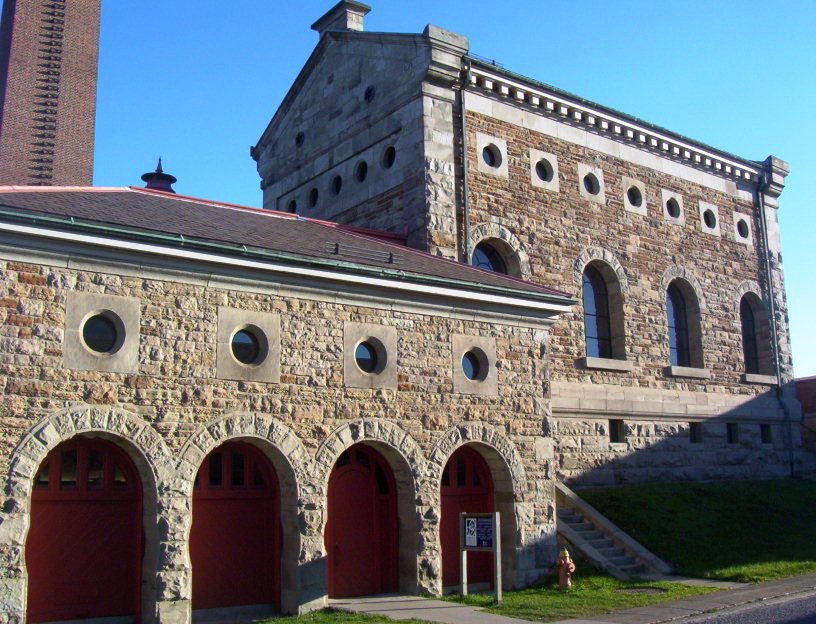Heritage Planning Workshop Recap
It’s been a busy month here at “History to the People” and I wanted to take the opportunity to tell you about some seminars and workshops I have taken part in recently that have been both helpful and have given me further knowledge in this wonderful world of built heritage and cultural landscapes.
The first event was a four day workshop hosted by the University of Waterloo’s Heritage Resources Centre which took place at the beautiful Museum of Steam and Technology in Hamilton, Ontario from October 23-24 and November 6-7, 2010. Here, Professor Robert Shipley and his staff led a series of lectures, group discussions, and team exercises on the world of heritage planning. As someone who eventually wants to become a heritage planner, I had literally been waiting all year for this workshop to take place, and it was worth the wait!
People who attended this workshop ranged from newly appointed municipal heritage planners, landscape architects, heritage consultants and a number of municipal heritage advisory committee members from all over the province of Ontario. The knowledge and passion for heritage and architecture collected in that room was staggering to say the least and I was very honoured to talk with and learn from all these individual experiences in the industry. The first weekend of the workshop gave us all a run down on what heritage planning is, the international context of heritage including UNESCO and ICOMOS, an explanation and discussion on the Ontario Heritage Act, the Historic Places Initiative and our first group exercise on how to write a statement of significance. In between all that, we got a guided, personal tour of the Museum which included a behind-the-scenes look at what is stored away from the view of the general public. The industrial legacies this Museum has collected is nothing short of amazing. Below are some pictures of that tour which includes two 70 tonne steam engines which had been used to pump water from Lake Ontario to the City of Hamilton.
The Museum itself is definitely worth a visit in you are in the Hamilton area. It was built in 1859 by engineer Thomas Coltrin Keefer. At the time, the City of Hamilton wanted to find a way to supply clean water to city residents as cholera and other diseases were increasingly becoming a problem in the current water supply. The beautiful Italianate/Renaissance Revival building is as stunning today as it was on its first day of operation and it is the only waterworks museum in North America where the original building, pumps and steam engines survive intact to this day. One of the steam engines works on a daily basis for visitors to witness. The only thing visitors have to imagine are these rooms being filled with burning steam while workers monitored the engines and young boys would climb up into dangerous places to keep the pumps well oiled.
The second weekend of the workshop examined in detail the Ontario Planning Act and how it relates to heritage conservation; the development of heritage based tourism, plus the economics and energy debates revolving around heritage conservation and adaptive re-use in 2010. There were a lot of lively discussions looking at various examples of these topics in many of the participants’ communities and how the various heritage advisory committee members were addressing the issues. Then, there was still time at the end for the group to run through a couple of examples of addressing adaptive re-use initiatives and role playing the various players in proposed heritage demolition debate topics. In the end, participants received a CD of the lectures, a collection of scholarly readings referred to, all sections of the Ontario Heritage Tool Kit, a guide to writing statements of significance, various standards and guidelines to a number of heritage organisations and other little items useful to those of us working in heritage. If you missed this workshop, no need to panic. The Heritage Resources Centre is organising a number of individual workshops coming up for 2011 that will cover a variety of similar topics. These seminars will take place in different locations across Ontario and average length of these seminars will be a day to two days in length. Once these have been finalised, I’ll cross post that list here for you to take a look at. If you are a member of a Municipal Heritage Advisory Committee or if you are in anyway involved in heritage, all these workshop are really valuable tools and I would highly recommend them to you.
My personal thanks to Professor Shipley and his staff: Lindsay Benjamin, Kayla Jonas, and Marg Rowell for putting on a great workshop and also to the really cool people I met there from all over the province!
In the next post, I will tell you about the Town of Aurora’s Heritage Event that I attended last week sponsored by the Town of Aurora’s Heritage Advisory Committee.








So nice to be able to see the beautiful old building in Eastern Canada, and learn first hand from you, a gifted researcher and writer about our interesting Canadian cities. Great article!
Thanks, Joyce!
I’m so glad that you enjoyed the workshop and our private tours! We were glad you were able to come.